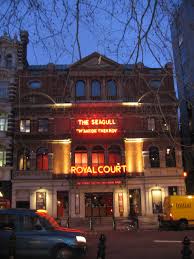
The Significance of Trafalgar Square
Trafalgar Square stands as one of the most famous public spaces in London, holding historical, cultural, and social importance. Established in the early 19th century, it commemorates the Battle of Trafalgar, a pivotal naval engagement during the Napoleonic Wars. The square is not only a site of national celebration but also a gathering place for public protests, artistic performances, and seasonal events. Located in the heart of London, it attracts millions of visitors each year, making it a pivotal aspect of the city’s identity.
Recent Events at Trafalgar Square
In recent months, Trafalgar Square has been the site of various significant events. Notably, on the weekend of the coronation of King Charles III, crowds gathered in the square to watch live broadcasts of the celebrations. This marked a momentous occasion for the British monarchy, with large screens set up and a wide array of festivities to enhance the atmosphere. Moreover, racial and environmental justice movements have continued to utilize the square as a platform for their causes, reflecting its ongoing role as a space for civic engagement.
The Square’s Cultural Attractions
Beyond its role as an events venue, Trafalgar Square is home to several important cultural sites. The National Gallery, situated at the northern edge, houses a vast collection of Western European paintings, while the Fourth Plinth showcases a rotating selection of contemporary art installations. The iconic Nelson’s Column, surrounded by impressive lion statues, remains a focal point, attracting tourists eager to capture its grandeur. Recent installations on the Fourth Plinth have sparked discussions about representation and the role of public art in societal dialogue.
The Future of Trafalgar Square
As London continues to evolve, so too does the future of Trafalgar Square. Plans are underway to enhance accessibility within the area and improve the environmental impact, aligning with the city’s broader sustainability goals. Activists and communities are also advocating for the recognition of diverse narratives within the square’s historical context. The future promises to integrate innovative solutions, ensuring Trafalgar Square remains a vibrant hub for all.
Conclusion
In summary, Trafalgar Square serves not just as a historical monument but also as a living cultural site reflecting the diversity and dynamism of London. Its role in public life, its artistic representations, and its ongoing evolution make it a significant point of interest for both residents and tourists. As changes unfold, it is clear that Trafalgar Square will continue to be at the forefront of London’s social and cultural landscape.
You may also like

Understanding Germany: A Hub of Innovation and Culture

Exploring the Royal Court Theatre: A Hub of Innovation
